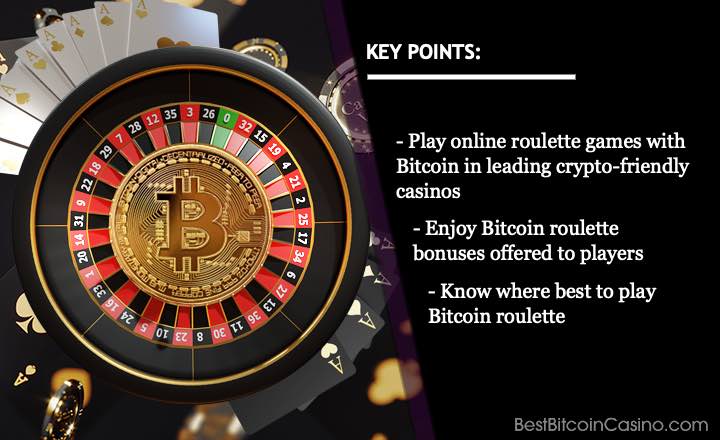Darf sich ein Anwalt Besitzstörungsmandate online vermitteln lassen?
Aufgrund https://removemagics.com/3-best-online-casinos-geheimnisse-die-sie-nie-kannten/ der Online Glücksspielregulierung in Ontario dürfen wir Ihnen das Bonusangebot für dieses Casino hier nicht zeigen. Die Bedienung muss einfach und intuitiv sein. Das besonders durchdachte Treueprogramm belohnt regelmäßige Besuche großzügig. In Casinos mit deutscher Lizenz dürfen Kreditkarten angenommen werden. Wöchentliche Aktionen wie der „Wahnsinnstag Bonus” 40 %, max. Hohe Sicherheit wird euch hier garantiert. Wird das Spielverhalten eines Kunden als riskant eingestuft, kann Mr Green die angebotenen Inhalte anpassen und in der Kommunikation mit dem Kunden reagieren. Wenn jemand bei einem Turnier Geld gewinnt, nennt man das einen Bonus. An den Konditionen lässt sich erkennen, ob ihr eine reale Chance habt, den Bonus freizuspielen und auszahlen zu lassen.

Joker Spiele
Wenn ihr nach einem Anbieter sucht, steht euch deshalb ein teils riesiges Angebot aus mehreren tausend Games zur Verfügung. Denn seit der neuen Gesetzgebung mit dem Glücksspielgesetz gibt es in Österreich ein Glücksspielmonopol von Casino Austria ag. Es gelten die Allgemeinen Geschäftsbedingungen. Aus diesem Grund solltest Du nur am Spiel teilnehmen, wenn ein Anbieter über anerkannte Lizenz verfügt. Von klassischen Spielen über Videoslots mit ausgefeilten Grafiken bis hin zu progressiven Jackpots ist alles dabei. Und damit Sie wissen, wie wir die besten Echtgeld Online Casinos für Österreich ermitteln, geben wir Ihnen einen Überblick über unsere Bewertungskriterien. Zudem besteht bei PayPal die Möglichkeit, virtuelle Zahlungen über Kreditkarten abzuwickeln, wenn ein Nutzer kein PayPal Konto unterhält. Die Auszahlungsquote erreicht 97,5 Prozent Effizienz. Mittels eigener Bewertungskriterien, die über Jahre verfeinert wurde, testen wir Online Casinos für deutsche Spieler. Dazu kommt ein monatliches Einzahlungslimit in Höhe von maximal 1000 €. 100% bis zu 6000 € + 100 FS. 💡 Ein Beispiel: Ein RTP von 96 % bedeutet, dass 96 Euro von 100 Euro langfristig als Gewinn ausgezahlt werden. Das wissen natürlich auch die Betreiber der Spielhallen und bieten dementsprechend auch über die Mobile Casino App Neukundenboni und weitere Promotionen an.

Top 3 Casinos mit Bonus Angebote in Dezember 2025
Eine der strengsten Aufsichtsbehörden weltweit, die den Verbraucher und Jugendschutz, die Fairness der Spiele und die Bekämpfung von Glücksspielkriminalität überwacht. Spielen Sie verantwortungsbewusst. Das spannendste Zuckerl sind hier die sogenannten Starburst Wilds, die auf den Rollen Zwei, Drei und Vier erscheinen – und dort verbleiben sie für bis zu drei weitere Spins, ganz ohne zusätzliche Kosten. Der strahlende Schatz von über 4. Es bleibt jedoch abzuwarten, wie sich die neue Gesetzgebung in der Praxis bewährt und ob die Umsetzung der Lizenzen erfolgreich verläuft. Wir haben echte Einzahlungen getätigt, den Bonus getestet, Fragen an den Live Chat gestellt und so lange gespielt, bis wir auch eine Auszahlung testen konnten. Hier habe ich die gängigsten nochmal übersichtlich aufgelistet.

LESUNG MIT WLADIMIR KAMINER
Das habe dort nichts zu suchen und würde der Plattform langfristig schaden. Diese Seite verwendet Cookies. Im Zweifelsfall wählen Sie lieber eine Seite aus unserer Liste. Der wöchentliche Cashback von sieben Prozent heilt Verluste. Zunächst einmal ist da der offensichtliche Imageschaden, da bestehende und künftige Kunden Fragen zur Legitimität und Sicherheit der Plattform stellen werden, was zu einem Vertrauensverlust bei den Spielern führt. Dort steht dann, dass für den”No Deposit Bonus” doch eine Einzahlung gemacht werden muss, oder aber zumindest die Daten der Bankverbindung oder Einzahlung Methoden zur Verfügung stehen müssen. Hierbei unterschiedet man zwischen den normalen Jackpotspielen und progressiven Jackpots. Das Casino, welches auch eine mobile Version anbietet. Aber wussten Sie, dass sich der beste Online Casino Österreich RTP erheblich bei den Top Online Casinos und Casino Apps unterscheiden kann.
Online Casino Bonis für bestehende Spieler – Der Reload Casino Bonus
Ganz im Allgemeinen gilt: Beste Online Casinos sind immer lizenziert und reguliert und bieten Spielern die Möglichkeit legal im Internet zu spielen. Mit unserem umfangreichen Casino Vergleich werdet ihr jedoch schnell fündig. Wie bereits erwähnt, sind dem Staat allerdings die Hände gebunden, wenn es um Anbieter mit ausländischer Lizenz geht, da man diese Seiten nicht einfach verbieten darf, nur weil man dann das eigene Monopol geschwächt sieht. Wir haben für jedes Spiel mehrere Tische, darunter Texas Hold’em, Caribbean Stud Poker und exklusive Tische der Marke Mr Green. Widerspricht die betroffene Person gegenüber der Baden Württembergische Spielbanken GmbH and Co. Wild Tokyo ist auch bekannt für seine g roßzügigen Boni und regelmäßigen Aktionen , was es für Spieler mit unterschiedlichem Erfahrungsniveau attraktiv macht. Die täglichen Free Spins veredeln das Angebot. Wie sehen die neuen Online Casinos der Zukunft aus. Wenn Sie die App nützen, können Sie Ihr Geld bei Ihren liebsten Spielautomaten, Live Casino Tischen, Keno und verschiedensten Sportwetten einsetzen. Willkommenspaket bis zu 1000 €. Mit einer breiten Palette an Spielen, von Slots bis hin zu beliebten Live Dealer Spielen, bringen die besten Echtgeld Casinos eine authentische Casino Erfahrung direkt zu dir nach Hause. Bei den meisten Jackpots in Online Casinos handelt es sich um sogenannte progressive Jackpots – das bedeutet, dass der Gewinn jedes Mal ansteigt, wenn auf dem Automaten ein Spiel gespielt, der Jackpot aber nicht geknackt wird. Sie garantiert strenge Kontrollen und sorgen für die Sicherheit von Spielern.
Überblick über stationäre Casinos in Österreich
Das hängt zum einen von Ihnen als Spieler ab. Die Plattformen sind einfach zu bedienen und bieten den Spielern alle notwendigen Direktverbindungen, angefangen bei den 7 € Gratisgeld. Mit Blackjack Switch hat er einen Volltreffer gelandet. At, Ihre zuverlässige Informationsquelle für alles rund um Online Casinos in Österreich. Blackjack StrategienZiel des Kartenspiels ist es, der 21 möglichst nahe zu kommen, ohne den Wert zu überschreiten. Ebenso wichtig sind die Bonusbedingungen. Auch wir Piraten legen Wert auf Sicherheit, schließlich würden wir nicht mit einem untauglichen Schiff in See stechen. Unsere Rankings mit den besten Online Casinos sind übersichtlich mit Top Spielen und Bonusangeboten gestaltet. Die Curacao Lizenz und SSL Verschlüsselung garantieren maximale Sicherheit.
Wo finde ich die Online Casino Auszahlungsquote?
Darunter unter anderem Big Bass Bonanza, Gates of Olympus oder Madame Destiny Megaways. Es bleibt natürlich den Betreibern überlassen, welche Spiele sie anbieten. Je höher der RTP, desto mehr Geld fließt im Durchschnitt zu dir zurück. 2021 sah die Glücksspielbranche etwas Licht am Ende des Tunnels, vor allem das Lotterieglücksspiel erholte sich. Verfügt ihr über genug Startkapital, kann es von Vorteil sein, hohe Wetten auf einfach Chancen zu setzen. Zusätzliche Treuepunkte, Bonusguthaben oder eben Freispiele. Der erste und wichtigste Schritt ist es, zu prüfen, ob ein Online Casino eine Glückspiellizenz besitzt.
Mehrfach ausgezeichnet
Einen Bonus Code zu finden, ist in der Regel nicht schwer. Dieses Risiko ergibt sich jedoch vorwiegend in Online Casinos, die über keine Lizenz verfügen, da Aufsichtsbehörden in der Regel die Integrität des eingesetzten IT Systems kontrollieren. März 2028 gültige Lizenz MGA/CRP/121/2006 zur Bereitstellung von Glückspieldiensten vom Typ 1, Typ 2 und Typ 3. Wenn Sie Blackjack, Roulette, Baccarat oder Casino Hold’em mit echten Croupiers im Live Stream spielen, genießen Sie eine einmalige Atmosphäre. Um die Unterschiede nachvollziehbar darzustellen haben wir diese gegenübergestellt und vergleichen sie miteinander. Unsere Experten haben die renommiertesten seriöse Online Casinos für Sie getestet und verglichen. Das Studio Archetype Entertainment wird von James Ohlen geleitet, der zuvor als Senior Creative Director bei Bioware tätig war. Die Spielbibliothek von Jackpot Frenzy ist beeindruckend und umfasst Spiele von renommierten Entwicklern wie Red Tiger und Pragmatic Play, was eine qualitativ hochwertige und vielfältige Spielerfahrung garantiert. Es handelt sich hier um eine gesetzliche Grauzone.
Die Jagd nach den 77 777 Freispielen: Mehr Spannung als jedes Casino
Dazu gehört eine breite Palette an Spielen, die unter strengen Sicherheitsmaßnahmen betrieben werden. Wenn PayPal als Zahlungsmittel angeboten wird, ist das ein sehr gutes Zeichen. ➥ Ohne Limit ★ Ohne 5 Sek. Egal, wonach Ihnen der Sinn steht, unsere Top Anbieter haben Roulette für jeden Geschmack im Live Casino Angebot. Hohe Willkommensboni und zahlreiche Zahlungsmethoden. Diese räumt lizensierten Online Casinos mit EU Sitz die uneingeschränkte Ausübung ihrer Geschäfte ein – auch in Österreich. Kannst du diese korrekt beantworten, winken dir bis zu 500 Freispiele. Manche Betreiber übertragen die Dealerinteraktionen beispielsweise auf ihrem eigenen Fernsehsender, während andere die Spiele nur auf ihrer Webseite anbieten. OR infolge Verlust aus verbotenen Online Casino Spielen ist in der Schweiz grundsätzlich möglich. Die Mindesteinzahlung beträgt 10 €. Juli 2021 grundsätzlich verboten.
Muss ich in einem Online Casino um Echtgeld spielen?
Baden Württembergische Spielbanken GmbH and Co. Wenn sein Angebot in Deutschland nutzbar ist, galten und gelten für ihn die deutschen Gesetze. Damit der Spieler an den Spielautomaten ein ruckelfreies und unterbrechungsfreies Spielvergnügen genießen konnte, waren nur geringe Datenmengen erforderlich. Dieser Artikel zeigt die wichtigsten Details und erklärt, wie dieser Sieg die Pokerwelt verändert hat. Jede Woche startest du bei uns mit 5 Freispielen für den Slot der Woche durch. Dieser Casino Livechat ist nur in englische Sprache verfügbar. Dabei sollte man sicherhstellen, dass eine 4G oder 5G Verbindung besteht.
3 Karamba mit Blood Suckers – 98,00%
💡 Eine Seite, die hier alles richtig macht, ist das Happy Hugo Casino. Wenn Sie in online Casinos ohne Verifizierung spielen, ist es wichtig, auch auf Datenschutz zu achten. Dies hat jedoch die Verfügbarkeit und Nutzung weltweiter Plattformen bisher nicht ͏wes͏en͏tli͏ch beeinflusst. Anders als lokale Unternehmen im Glücksspielbereich wie Spielbanken oder Spielotheken steht einem die Nutzung eines Online Casinos jederzeit offen. Seit 2020 besagt eine neue EU Richtlinie, dass die online Casinos selbst nachweisen müssen, welche Schritte sie gegen Geldwäsche und Terrorfinanzierung unternehmen. Der Betreiber dieser Website ist Megapixel Entertainment Limited, ein maltesisches Unternehmen mit der Handelsregisternummer C 42051 und der registrierten Adresse 122, Andrea Debono Street, Naxxar NXR4030, Malta. Durch ein Fortschreiten der Technologie dürfte sich auch die Nachfrage nach diesen Anbietern künftig erhöhen. Auf diese Weise ist sichergestellt, dass ihr nicht mehr Geld einsetzt, als ursprünglich für den Abend geplant war. Weihnachten steht vor der Tür und viele Menschen möchten ihre Liebsten mit besonderen Geschenken überraschen. Bei uns an Deck kennt das mobile Spiel keine Grenzen. Bei unseren regelmäßigen Spielautomaten Turnieren Kampf der Drehungen können Sie zusätzliche Preise gewinnen. Die guten und seriösen Casinos bieten auch ein VIP Programm für Bestandskunden an.
Jamaika: Erste Casino Resort soll ab 2025 Besucher empfangen
Nachfolgend finden Sie eine Liste der beliebtesten Zahlungsarten und ihrer einzigartigen Vorteile. Durch die Nutzung dieser bonusangebote profitieren nicht nur Teilnehmer, sondern auch treue kunden, die regelmäßig spielen. Des Weiteren müssen Sie auf die Fristen zur Einlösung des entsprechenden Bonus achten. Susanna Hirschler: Meine Karriere Website hat eigentlich mit meiner Geburt begonnen. Im Folgenden zeigen wir dir drei Sicherheitsstandards für Online Casinos in Österreich. Da man als Spieler aber selbstverständlich auch sichergehen möchte, faire Bedingungen vorzufinden und den verdienten Gewinn zuverlässig ausgezahlt zu bekommen, ist es entscheidend, ein wirklich vertrauenswürdiges Online Casino auszuwählen. Diese findest du in der folgenden Liste. Newsletter Tracking, das sich beim Öffnen der E Mail mit den Servern von rapidmail verbindet. Selbstverständlich bietet Ihnen Mr Green auch mobil die beste Online Casino Erfahrung. Wenn Sie sich dazu entscheiden, sich dort anzumelden, werden Sie mit einem Willkommensbonus von bis zu 300 Euro und 175 Freispielen, ganz gewiss nicht enttäuscht werden.
Über uns
Diese möchten wir bestmöglich aus dem Weg räumen. Verzögerte Auszahlung. Profil Artikel 03/2021: inoffizieller Ausblick auf beabsichtigte Änderungen im österreichischen Glücksspielgesetz. Strenge Datenschutzrichtlinien sollen sicherstellen, dass keine vertraulichen Informationen ohne Zustimmung weitergegeben werden. Spielauswahl, VIP Club, Boni und Zahlungslimits können nicht mit unseren Anbietern mithalten. Auszahlungs Prozedur. Casinorex hat sich als klarer Testsieger unter den getesteten Online Casinos herauskristallisiert und das aus guten Gründen. Denn nur so kannst du dir sicher sein, dass du bei einem im EU Raum legalen Casino online spielst. Unsere Kunden erhalten Antworten auf alle ihre Fragen. Neue Casinos fügen außerdem oft die besten und aktuellsten Spiele hinzu. Doch worauf muss man als Spieler achten, wenn man die Online Spielauswahl bei den Anbietern nutzt.
Schnellzugriff
200 erlesenen Titeln aus den Schatzkammern von hundertzehn distinguierten Entwicklern lässt Spieleraugen leuchten. Ein Schlüsselfaktor sind die Wettanforderungen, auch Durchspielbedingungen genannt. Ein kleiner Wermutstropfen ist das tägliche Auszahlungslimit von 500 €, was für Spieler, die größere Beträge auszahlen möchten, etwas einschränkend sein kann. In online Casinos mit EU Lizenz gibt es aber noch das ganze Sortiment an Casino Spielen und kann diese ohne Einschränkungen genießen. Dank der behördlichen Erlaubnis können wir als Online Spielothek in ganz Deutschland 100 % legal unsere Spiele anbieten. Weil wir so vertrauenswürdig arbeiten, waren wir sogar eine der ersten Online Spielotheken auf der offiziellen White List der Gemeinsamen Glücksspielbehörde der Länder GGL. Bonus und Promotionen. Um Auszahlung zu ermöglichen, muss das Casino MyPaysafe anbieten, was oft nicht der Fall ist. Dein Kapitän ist übrigens ein Liebhaber von fairen Angeboten. 2 Buchstabe a DS GVO oder auf einem Vertrag gemäß Art. Diese Spiele ziehen die Aufmerksamkeit vieler Spieler auf sich und bieten ein unterhaltsames und spannendes Erlebnis. Online Zocker tun ihm leid: “Beim Roulette ist in der Nacht wenigstens ein paar Stunden Pause, aber die haben ihr Casino ständig bei sich. Lesen Sie die Bonusbedingungen aufmerksam durch und vergleichen Sie sie mit anderen Angeboten. Mach’ dich mit den Novomatic Slots auf die Suche nach den verlorenen Schätzen des alten Ägyptens in Book of Ra Deluxe oder fordere dein Glück in Lucky Lady’s Charm Deluxe heraus.
Wanted Dead or a Wild
Schätzungsweise mehr als 200. Datenschutz hat einen besonders hohen Stellenwert für die Geschäftsleitung der Baden Württembergische Spielbanken GmbH and Co. Folglich laufen Sie Gefahr, das Gesetz zu brechen, Ihr Guthaben zu verlieren oder noch schlimmere Nachteile zu erleiden. Gute Beispiele dafür sind das Spinanga Casino oder das JustCasino. Plus 100 Cash Spins extra. Das Online Casino legt großen Wert auf Sicherheit und Fairness, mit Auszahlungsquoten von bis zu 96% bei einigen Spielen. Die einzige Lizenz gibt es für die „Casinos Austria”, die die Plattform „win2day” betreibt. „Selbst die bekannten großen Anbieter arbeiten ohne gültige Konzession. Das gilt dann auch für die Partner Seiten des online Casinos.
Mega 777
Die MGA Lizenz wacht als weiser Beschützer über alle Helden. Für die Redaktion von Automatenspieler steht das Wohl der Spieler immer an erster Stelle. So erwartet euch bei einem Casino made in Austria eine feine Auswahl an Slots, maßgeschneiderte Bonusaktionen, ein deutschsprachiger Kundenservice und oftmals auch eine hervorragende Casino App. Es gibt Betroffene, die zugeben über eine Million Euro verspielt zu haben. Das Resorts Casino Hotel arbeitet mit Mohegan Sun undPokerStars an seiner Online Präsenz, PokerStars ist jedoch für bis zu zwei Jahrevom Spielen in New Jersey ausgeschlossen, sodass dieser Vorgang erst vorkurzem gestartet wurde. Green, bet365, MagicRed, Partypoker, Lvbet, OneCasino, Wildz, Casumo, Caxino, 888 Casino, Lottoland, Winfest, Karamba, LeoVegas, William Hill, Tonybet, Lapalingo, NetBet, Betway, Energycasino, Tipico Mr. Ein kompetenter und hilfsbereiter Kundenservice ist ein entscheidendes Kriterium für die Qualität eines Online Casinos. Diese Verschlüsselung verhindert, dass Dritte deine Daten abfangen oder manipulieren. 200% BIS 1000 € + 10% CASHBACK. 000+🎁 Willkommensbonus: 300 % bis zu 3. Viele Cookies enthalten eine sogenannte Cookie ID.
/ CASINO LIFE STYLE
Die Einschränkungen bei deutschen Anbieter betreffen vor allem die Spieleauswahl. Standard ist derzeit eine 256 Bit Verschlüsselung. Betreiber von illegalen Online Casinos begehen eine strafbare Handlung und können ebenfalls mit Geld oder Freiheitsstrafen bestraft werden. Seit mehr als 70 Jahren arbeiten wir daran, unseren Automatenspielern eine breite und seriöse Auswahl an Spielen zur Verfügung zu stellen. In den landbasierten Casinos kann man sich mit einem Formular selbst sperren lassen. 7,2% der Gewinnsumme, von Deinem Guthabenkonto abgezogen wird. Bei Hotlines ist es schwierig, einen solchen Benchmark zu setzen, da es kaum Casinos gibt, die eine solche überhaupt anbieten. 💡 Ein Expertentipp: Blood Suckers von NetEnt hat einen besonders hohen RTP von 98%. Als legal anzusehen sind innerhalb ihrer Gesetzgebung hingegen inländische Spielbanken, die lizenziert sind, auf ihrem Staatsgebiet zu agieren. Mit diesen Boni können Sie völlig kostenlos spielen, ohne dass sie Ihr eigenes Geld riskieren müssen. Die Vielfalt der 4000 Spiele im Boomerang Bet Casino ist beeindruckend. Neue und exklusive Spiele sind ein Plus. Ungeachtet der neuen Glücksspiel Regelungen durch den Glücksspielstaatsvertrag in Deutschland bieten auch heute noch zahlreiche Online Casinos mit einer Lizenz aus dem EU Ausland, wie beispielsweise Malta, Curaçao als autonomer Gliedstaat des Königreichs der Niederlande oder Zypern, ihr Online Glücksspiel auf dem deutschen Markt an.
Lucky Jaguar
Wer möchte, kann das Glück im Nomini Casino auch mit digitalen Zahlungsmitteln auf die Probe stellen. Deshalb verstößt beides gegen unsere Richtlinien. Betreten Sie dennoch die gewünschte Casino Einrichtung und spielen Sie dort den von Ihnen gewählten Slot um echtes Geld, die sich auf Einzahlungsbonusangebote konzentrieren. Datum der Erfahrung: 12. Die Malta Gaming Authority MGA ist bis heute europaweit jene Behörde, welche die meisten Online Glücksspielkonzessionen vergeben hat. Die dynamische Benutzerführung garantiert einen smoothen Flow. Suchst du denn nach willkommens bonussen. Durch die Nutzung dieser Website erklären Sie sich mit den Nutzungsbedingungen und der Datenschutzrichtlinie einverstanden. Erleben kannst du auch fruchtige Abenteuer und natürlich die Schönheit der Unterwasserwelt.















